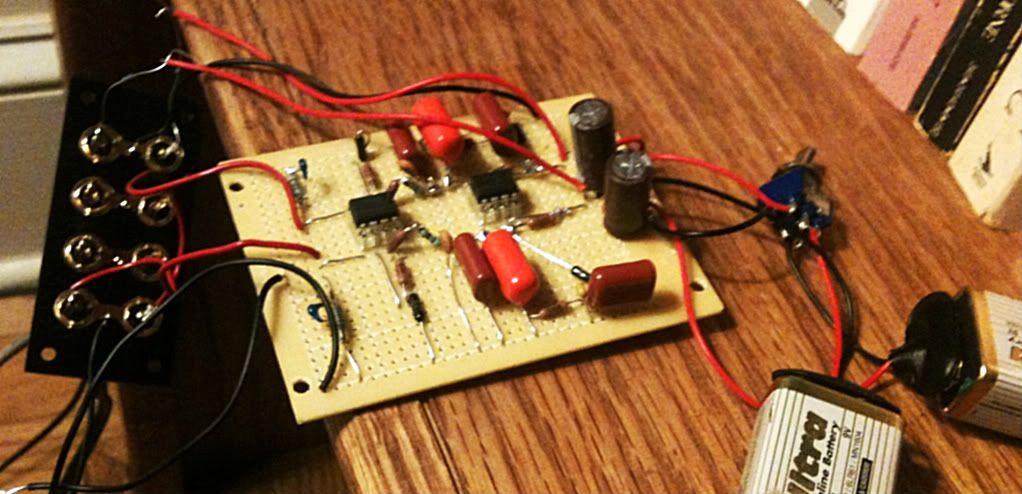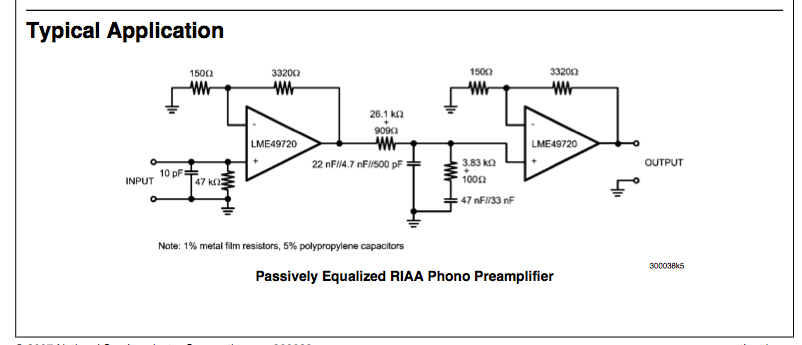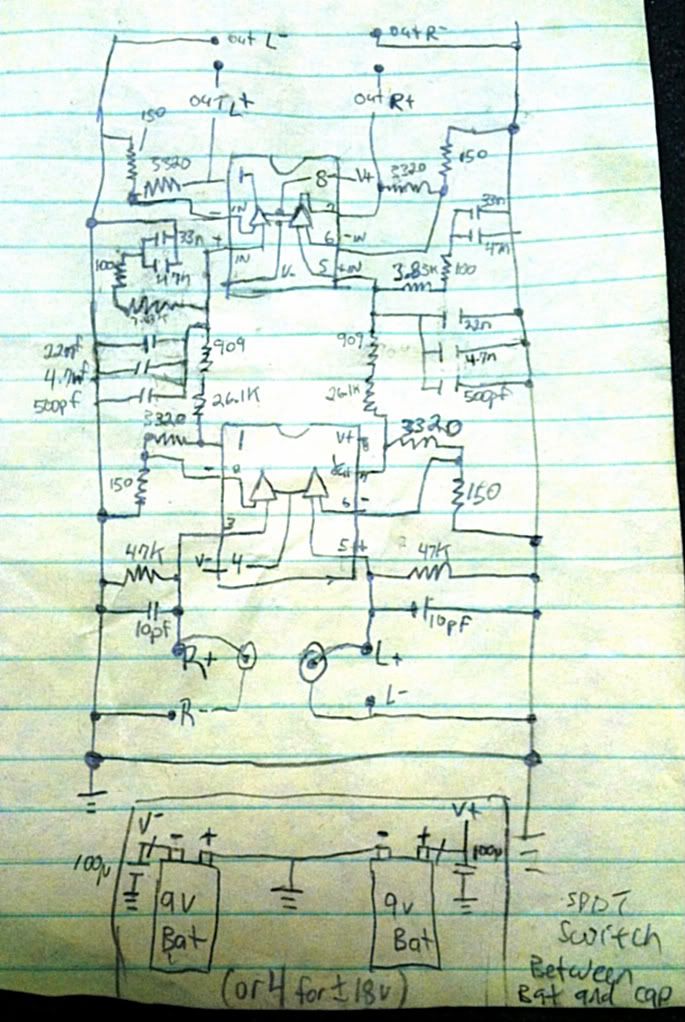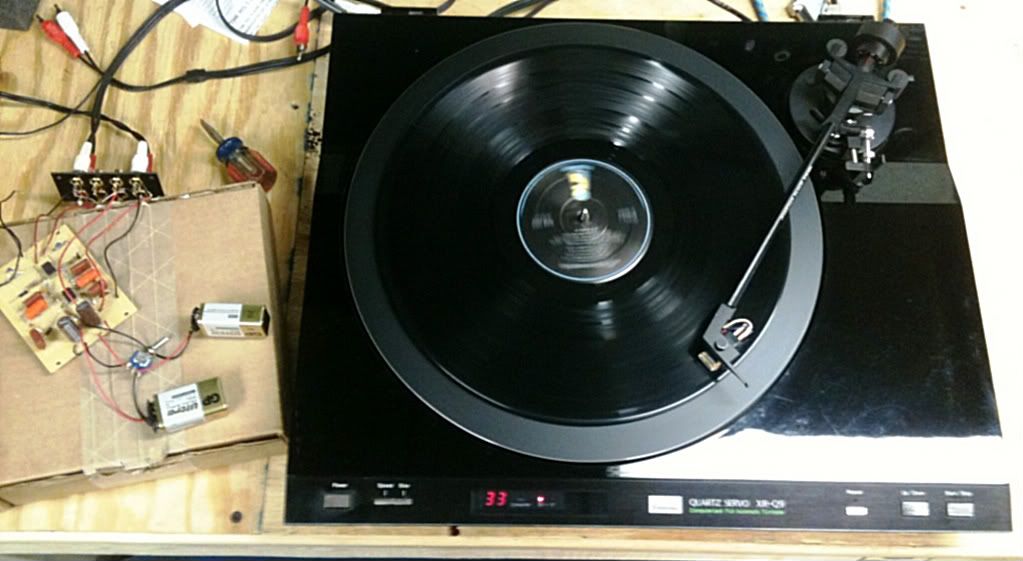Fasterdamnit
Super Member
We needed a nice, modern phono pre-amp for the shop- One that was not expensive but would really give high end performance. I like the KISS principle and picked the recommended circuit from the National Semiconductor datasheet using two LME49720 op amps.
Two sockets, two chips, two 9V batteries, a switch, two 100uf power supply caps and a handful of .1% and 1% resistors with Panasonic poly caps on a ratshack board and this little preamp sounds VERY good! Big Bill did most of the assembly. As with most bread board projects, it took a little troubleshooting to find the cause of one dead channel. But perseverance paid off!
Big Bill did most of the assembly. As with most bread board projects, it took a little troubleshooting to find the cause of one dead channel. But perseverance paid off!
Just started listening and the acoustic performance is open, airy and very detailed. No heavy bass on this recording, so that will be checked later.
For a total outlay under $40, I am quite pleased.
Two more batteries and it can run at +18V/-18V.


Build of materials link:
http://www.audiokarma.org/forums/showpost.php?p=4858571&postcount=193
Credits:
..........Item.................pg./.post.........member
Original schema/breadboard.…......01/010........Fasterdamnit
Original Layout......….....03/033........HypnoToad
Layout #2...............…..08/106........HypnoToad
1st PCB......................12/174.........HypnoToad
Tips #1................…....12/180.........HypnoToad
Tips #2...............….....13/189.........HypnoToad
CNC BOM.............….....13/193.........HypnoToad
List of opamps........…...32/471.........shelly_d
CNC schematic .jpg…....39/572.........ghazzer
SSP BOM................…..51/762.........HypnoToad
Omshira’s PCB layout.....52/775........Sachu888
Two sockets, two chips, two 9V batteries, a switch, two 100uf power supply caps and a handful of .1% and 1% resistors with Panasonic poly caps on a ratshack board and this little preamp sounds VERY good!
 Big Bill did most of the assembly. As with most bread board projects, it took a little troubleshooting to find the cause of one dead channel. But perseverance paid off!
Big Bill did most of the assembly. As with most bread board projects, it took a little troubleshooting to find the cause of one dead channel. But perseverance paid off!Just started listening and the acoustic performance is open, airy and very detailed. No heavy bass on this recording, so that will be checked later.
For a total outlay under $40, I am quite pleased.
Two more batteries and it can run at +18V/-18V.


Build of materials link:
http://www.audiokarma.org/forums/showpost.php?p=4858571&postcount=193
Credits:
..........Item.................pg./.post.........member
Original schema/breadboard.…......01/010........Fasterdamnit
Original Layout......….....03/033........HypnoToad
Layout #2...............…..08/106........HypnoToad
1st PCB......................12/174.........HypnoToad
Tips #1................…....12/180.........HypnoToad
Tips #2...............….....13/189.........HypnoToad
CNC BOM.............….....13/193.........HypnoToad
List of opamps........…...32/471.........shelly_d
CNC schematic .jpg…....39/572.........ghazzer
SSP BOM................…..51/762.........HypnoToad
Omshira’s PCB layout.....52/775........Sachu888
Last edited:




